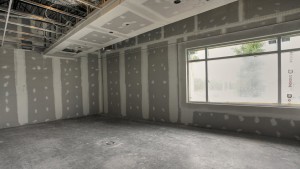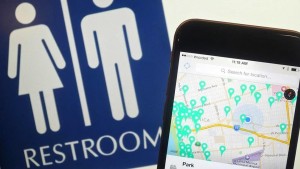Common Misconceptions About Commercial Renovations

As you begin planning your next building renovation or construction project, there are some potential unexpected stumbling blocks which lead to lost time, money and energy.
You’re ready to start tearing down walls or begin clearing land, but be careful about running with assumptions for construction projects. Remember to evaluate the renovation property value. Before you run wild with your redesign dreams, review some common remodeling myths which have been debunked and explained.
1. Doing It Yourself Saves Money
You’re feeling confident and ready to take a sledgehammer to that extra wall. However, by rushing into a project solo, you may cost yourself more money and energy than you’re saving. Be honest with yourself about when you’re in over your head and need to hire a professional. Professionals can offer added value with planning the project. Sometimes mess-ups cause more work for contractors to fix than if they had been hired earlier on in the process.
2. High-Priced Contractors Are More Reliable
With most market products, increased costs are assumed to indicate increased values. While that may be true for furniture or steam cleaners, it’s not always the case for contractors. Be sure to conduct thorough research before selecting a professional for your projects. Check out photos of previous work and read through legitimate reviews from real customers. Consider talking with friends and family as well about contractor recommendations.
3. You Should Plan Before Hiring A Contractor
While you may have clear visualizations for the upgrade you’re trying to make, a professional would have more experience in the mechanics of your design. You don’t have to have everything all laid out before talking to a contractor. They should be just as much involved in the planning as in the actual construction. If you’ve taken the steps to find a reliable company, you should feel safe and in including them throughout the whole process.
4. High Quality Materials Increase Property Value
Top value materials may seem like a great idea to increase property value, but remember to stay within the quality realm of your locational area. If there’s a possibility of selling down the line, the value should be relative to surrounding organizations for higher buying potential. More expensive does not always mean higher quality. Evaluate the purpose of each given material, to determine if its suited for the job at hand.
In additional to style and utility, consider the environmental impact when choosing materials like glass or steel. Using eco-friendly products may be more expensive up-front, but they usually help to save money in the long run, in addition to helping the environment. Creating attractive exterior designs and renovations also goes a long way to help enhance community health and desirable walking experiences.
5. You Don’t Need A Permit For Minor Renovations
While more cosmetic changes won’t require a permit, be careful with even smaller renovations. Several local and state laws will require you to obtain a contractor’s license before initiating construction-type redesigns. If not, simply hire an outside contractor.
Key Areas for Commercial Bathroom Design and Renovation
With the numerous crucial details of developing a new business, designing an appealing commercial bathroom often gets overlooked. However, ensuring a thoroughly comfortable customer experience goes a long way in cultivating brand trust and loyalty. That experience starts with taking care of guests’ most basic needs: the restroom.
Whether it’s a mall, school, hospital or other commercial business, be sure to utilize safe, effective planning and know that it will shape visitor opinions. When evaluating the appeal and functionality of a commercial restroom, narrow your attention to four primary categories: sinks, flooring, lighting and accessories.
SINKS:
Out of everything in the bathroom, sinks are the most used and perform the greatest variety of tasks. Choosing the right sink can be really fun. There are numerous artistic designs that will lend a modern tone to any commercial restroom. Don’t be afraid to get creative with deeper square and oval shapes.
The National Kitchen and Bath Association provides a few steps to help in choosing the right sink. First assess how many sinks will be needed. This will help you decide the best overall layout. You can choose whether you want a dominant sink, varying sizes or a row of equal-capacity sinks. After you’ve selected the number and layout, it’s time to select the right material. Materials such as stainless steel, porcelain, gentle composite and natural stone each have pros and cons to consider. For example, stainless steel is durable and easy-to clean but scratches easily and shows water marks.
Once you’ve selected the best sink material for your needs, it’s time to choose sink accessories. Consider artistic faucets and mirrors. Check out design trends for modern styles. For example, researchers found that at an 80% usage rate, polished chrome is the fastest growing selection for bathroom faucets.
FLOORING:
Tiled-floors are the most common for commercial restrooms as well as the easiest to clean. However, there’s still a great variety to choose from as far as color, size and design. You want to create a unique and gorgeous feel, and flooring is a huge part of that. Pebble tile flooring is becoming more popular. Not only is the material elegant, but it’s also quite affordable. Remember to ensure that the slip-resistant surfaces meet any state or local codes which may apply.
LIGHTING:
Choosing the right lighting system can really set the tone and create the right vibe. In addition to the structure style, it’s also important to choose a good level of illumination Remember adjustable lighting is always an option, which could be used to set an evening or daytime mood. While dimmer lighting may add an up-scale aura, remember to ensure adequate lighting in appropriate areas for task completion.
ACCESSORIES:
The additional smaller elements can be used to enhance functionality and to improve the aesthetic appeal in any industry restroom. When considering the accessories, think intricate flushing systems, hand dryer varieties and toilet paper holders. While you’ll want to create a design flow among the restroom elements, mixing and matching can lend elegance as well. Using a variety of accessories, you can add some pizzazz to an otherwise boring commercial bathroom.
September 16, 2016
Wayne Foreman

